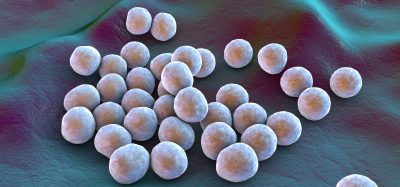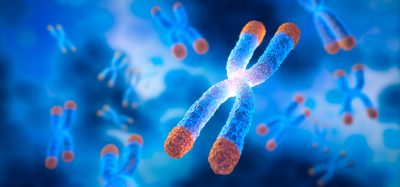Hit-to-lead discovery at a nonprofit research institute
Posted: 7 February 2019 | Anthony Pinkerton | No comments yet
Small molecule drug discovery has long been the domain of pharmaceutical companies, and that’s not likely to change anytime soon. But there’s a cadre of universities and nonprofit research institutes that have embraced drug development at its earliest stages, in some cases identifying and optimising compounds that target possible disease-driving proteins discovered in their labs.
Small molecule drug discovery has long been the domain of pharmaceutical companies, and that’s not likely to change anytime soon. But there’s a cadre of universities and nonprofit research institutes that have embraced drug development at its earliest stages, in some cases identifying and optimising compounds that target possible disease-driving proteins discovered in their labs.
This is not drug discovery, per se, but rather a way to extend bench science into a more translational space. At Sanford Burnham Prebys Medical Discovery Institute (SBP), embracing high-throughput screening has offered a new way to interface with drug companies and potentially help patients. But it also circles back to the discovery science that informs everything we do. New lead compounds offer unique ways to interrogate biology. The ability to identify and optimise chemical hits is a multi-use tool that can advance science in many directions.
History and capabilities
Based in San Diego, California, SBP was founded in 1976 as the La Jolla Cancer Research Foundation. Co-founder William Fishman, PhD, was focused on understanding alkaline phosphatases and their relationship with cancer – more on that later. In addition to an NCI-designated Cancer Center, SBP investigates neuroscience and ageing, infectious and inflammatory diseases, children’s health and other areas.
SBP has always combined our traditional academic focus on solving the most basic biological problems with ongoing efforts to translate those discoveries into therapeutics. Ten years ago, we created the Conrad Prebys Center for Chemical Genomics (CPCCG) to advance that mission.
CPCCG was founded as part of the Molecular Libraries Probe Production Centers Network, which was created to identify small molecule probes that modulate gene activity and interrogate cellular networks.
The centre’s high-throughput robotic screening combines high content screening, automated microscopy and other platforms to perform target-based and phenotypic assays. Together, these systems can process around a million compounds, though most screens are in the 100,000 to 300,000 range, depending on the target’s complexity. We also have access to an 800 MHz NMR facility to study small molecules and proteins, as well as micro-isothermal calorimetry to establish binding constants.
These tools help power a comprehensive medicinal chemistry and chemical informatics department with expertise in hit-to-lead optimisation, analogue synthesis and exploratory pharmacology.
Screening
We do both phenotypic and target-based screens, each of which have their pros and cons. The downside to a target-based approach is the target may not be strongly linked to a specific disease.
Phenotypic screening offers advantages because it is the ultimate functional readout. On the other hand, with phenotypic, we become beholden to a specific assay, which may be prone to artefacts. It’s not a real system, it’s distilled down from actual human disease. For example, an assay that causes neurite growth may look like it has solved Parkinson’s, dementia and everything in-between. But in reality, it’s just spurious effects unique to that assay.
With a target-based approach, the results are more transparent. We can be certain our hits are interacting with the target, turning it on or off. From there, a phenotypic assay can be quite useful to validate the results from the targeted assay.
The hit to lead process
Moving a compound from hit to lead is about 75 percent of our chemistry workload and the most interesting part of my job.
The testing funnel is usually quite straightforward. A primary assay may look for compounds that inhibit an enzyme. These are often followed by secondary, biophysical assays to ensure notable compounds are physically interacting with the target. Once we know specific compounds are binding to the target and showing a functional effect, we can move on to the next phase.
Sometimes we only get a few hits. In a way, that makes life easier because we don’t have to triage. On other occasions, we have to choose which hits to explore. We apply a variety of criteria to pick favourites. In some cases, we make choices based on the ease of the chemistry. Is a compound tractable enough to expand the structural activity relationship (SAR)? Sometimes, instinct informs decision making. That’s why it is so important to have an experienced team.
Frequently, this is a resource game. We triage the compounds we believe will offer the best return on investment. That’s not altogether different from pharma, though they generally have more resources to expand.
Throughout this process, we are generally focused on SAR. Starting from the initial hit, we develop 30 to 50 compounds for each distinct chemical series, making various structural changes to enhance the SAR. The goal is to create a compound that can do a better job modulating the target’s activity.
There’s a constant winnowing process as we try to determine which hits can be optimised into a lead compound with notable biological activity. In some cases, even after the lab makes 30 or more compounds, none of them improves on the initial hit. That happens more than we would like. Sometimes, the initial hit turns out to be an artefact. In other cases, the compound is interacting in a region that just can’t be modulated.
We’re looking almost exclusively at SAR on the target, and generally not testing for toxicity. This is where an academic environment diverges somewhat from pharma companies, which are constantly eyeing parameters such as toxicity.
This underscores the differences in our goals. Ideally, we would like to develop a compound that can ultimately become a drug and help patients. But our primary purpose is to create chemical compounds that become research tools to validate new targets, allowing us to probe the biology and learn more about specific systems in vitro or in vivo. In those cases, toxicity is less of a concern.
Pharma has more resources, but in some ways, they are more restricted. They have to be more careful about putting resources into a compound with early toxicity issues. We don’t have to consider those variables as much. We get to explore.
There is incredible scientific value in developing a tool compound, even if it’s never going to be a drug. Frequently, researchers can’t chemically validate a target until they have a compound that will modulate it.
This is a slow, rigorous process. We’re often in uncharted waters and don’t know if a compound will work until it does (or doesn’t). There’s a fuzzy line between lead optimisation and hit-to-lead chemistry, one rolls into the other. Sometimes the process can take two years (or more).
Roles and results
The centre operates under many umbrellas. In some cases, companies send us their libraries. We screen them and send the hit set back. There’s no optimisation or intellectual property rights. We just forward the data, and they figure it out from there.
In other cases, we do screens with a company and conduct the hit-to-lead chemistry for them or in parallel with them. Sometimes we do all the hit-to-lead, and some of the optimisation, and then approach potential partners who might be interested in that particular compound.
For example, after an extensive screen, researchers at SBP recently showed that amodiaquine, a compound that has been used to treat malaria for decades, inhibits the apelin protein, which has been linked to the excessive vascularisation associated with diabetic retinopathy and wet age-related macular degeneration.1 We believe these results will be picked up by a pharma company interested in these indications.
In another instance, we identified and optimised a compound that inhibits the tyrosine phosphatase LMPTP, which could potentially reduce insulin resistance in patients with type 2 diabetes.2 The compound is both highly selective and relies on an uncompetitive mechanism. We also developed a brain-penetrating neurotensin 1 receptor (NTR1) agonist that has the potential to treat addiction.3
From a clinical standpoint, one of our most advanced compounds is DS-1211, which arose from a collaboration between SBP and Daiichi Sankyo. The compound is a tissue-nonspecific alkaline phosphatase (TNAP) inhibitor, developed after an extensive screening and optimisation process in which SBP discovered SBI-425 (an early lead that helped preclinically validate TNAP as a therapeutic target and ultimately led to DS-1211).4 The study is being conducted in healthy volunteers to determine if DS-1211 could be used in patients with rare ectopic calcification diseases.
In some ways, the screens and SAR we did to develop the precursor to DS-1211 was like coming home, as it extended the alkaline phosphatase research Drs. William Fishman and José Luis Millán were working on during the early days of the institute.
Over the past decade, we’ve found the ability to screen large chemical libraries against specific biological targets has been a great boon for the research. In some instances, compounds have been licensed to pharma companies and have even gone into patient trials.
Those are great events, but we never lose sight of our mission to conduct basic biological science. For SBP, chemical genomics capabilities mean we are better able to perform those explorations. Lead compounds are an added tool to advance science
Biography
Dr. Anthony Pinkerton is currently leading the chemistry efforts on a broad range of targets across multiple therapeutic areas at Sanford Burnham Prebys Medical Discovery Institute (SBP). Prior to SBP, Dr. Pinkerton worked as a medicinal chemist at the Merck Research Laboratories in San Diego. His experience spans applications in CNS, virology, diabetes, inflammation and oncology. He is an inventor or co-inventor on over 40 patents or patent applications covering molecule therapeutics as well as over 70 publications. He earned his Ph.D. from Stanford University and was a Fulbright Scholar at ETH-Zurich.
References
- McAnally D. Repurposing antimalarial aminoquinolines and related compounds for treatment of retinal neovascularization. PLoS One. 2018 Sep 12;13(9):e0202436. doi: 10.1371/journal.pone.0202436. eCollection 2018.
- Stanford S. Diabetes reversal by inhibition of the low-molecular-weight tyrosine phosphatase. Nature Chemical Biology volume 13, pages 624–632 (2017).
- Peddibhotla S. Discovery of ML314, a Brain Penetrant Nonpeptidic β-Arrestin Biased Agonist of the Neurotensin NTR1 Receptor. ACS Med Chem Lett. 2013 Sep 12; 4(9): 846–851.
- Pinkerton, A. Discovery of 5-((5-chloro-2-methoxyphenyl)sulfonamido)nicotinamide (SBI-425), a potent and orally bioavailable tissue-nonspecific alkaline phosphatase (TNAP) inhibitor. Bioorg Med Chem Lett. 2018 Jan 1;28(1):31-34. doi: 10.1016/j.bmcl.2017.11.024. Epub 2017 Nov 11.
Related topics
Disease Research, Drug Development, Drug Discovery, Hit-to-Lead, Screening, Small molecule








